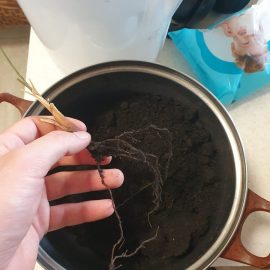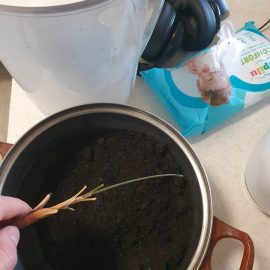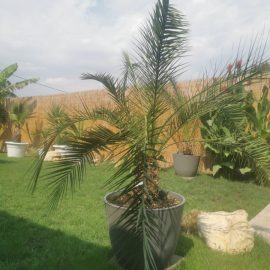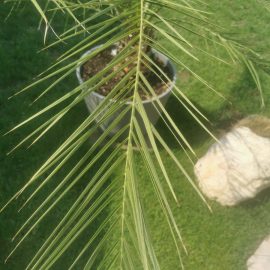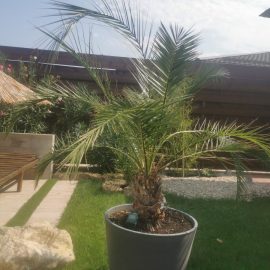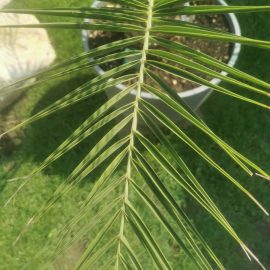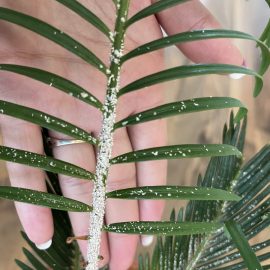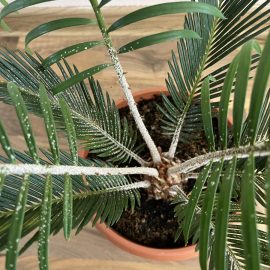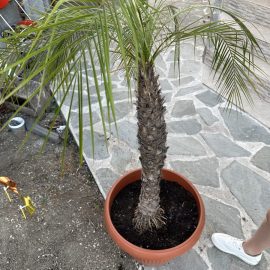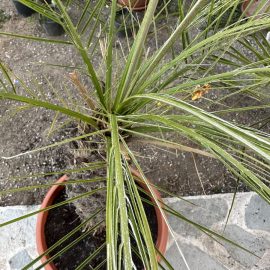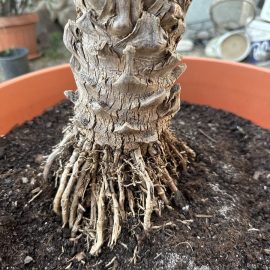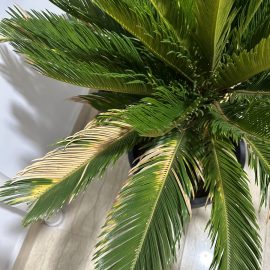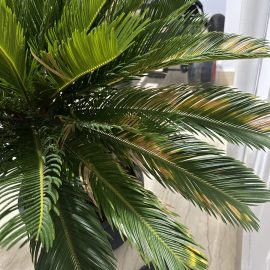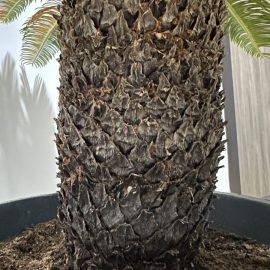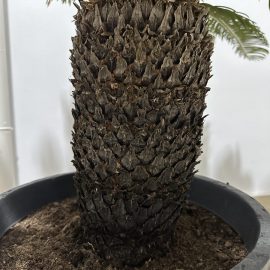Chamaedorea, plant care and growing guide
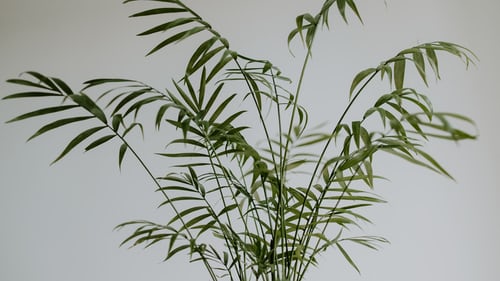
Chamaedorea, popularly called “dwarf palm” or “mountain palm”, is a genus of plants that includes about 107 species of palm trees of relatively small size (between 0.3 and 6 meters). They are native to the tropical and subtropical areas of America.
Species and varieties
Chamaedorea elegans. It has thin stems, similar to those of sugar cane, and it blooms all year round, the inflorescences being yellow. It is a dioecious plant, with female and male flowers. This palm tree is known for its property of filtering the air. The leaves are intense green, feathery, with lanceolate leaflets. This species can reach a height of 1.5 m, but it usually grows up to about 60 cm.
Chamaedorea metallica, another species of the genus Chamaedorea, is distinguished by the shape of the leaves, which are bifurcated and by the dark green, slightly blue color. At the same time, the glossy leaves give the plant a metallic appearance.
Chamaedorea seifrizii is very similar to bamboo plants and is taller and thicker than the other two species. It has dark green leaves, which are narrow and sharp.



Care
Light. The dwarf palm prefers to be placed in bright spaces, but not in direct sunlight. It is best to place it near a window with a thin curtain that filters strong light.
Watering. Water the plant moderately, preferably when the soil is dry on the surface because palm trees are sensitive to excessive water. As the temperatures decrease, the amount of water should also decrease.
Fertilization. It is indicated to apply a specific fertilizer, in the spring-summer period. In the winter months, fertilization has to stop.
Recommended products
-
You can find products on a different store
Change Store -
You can find products on a different store
Change Store -
You can find products on a different store
Change Store -
You can find products on a different store
Change Store -
You can find products on a different store
Change Store -
You can find products on a different store
Change Store -
You can find products on a different store
Change Store -
You can find products on a different store
Change Store -
You can find products on a different store
Change Store -
You can find products on a different store
Change Store -
You can find products on a different store
Change Store -
You can find products on a different store
Change Store -
You can find products on a different store
Change Store -
You can find products on a different store
Change Store -
You can find products on a different store
Change Store -
You can find products on a different store
Change Store -
You can find products on a different store
Change Store -
You can find products on a different store
Change Store -
You can find products on a different store
Change Store -
You can find products on a different store
Change Store -
You can find products on a different store
Change Store -
You can find products on a different store
Change Store -
You can find products on a different store
Change Store -
You can find products on a different store
Change Store
Substrate. It must drain the water well and have a pH between 5 and 7.5. It can be made up of Ericaceae soil or garden soil.
Recommended products
-
You can find products on a different store
Change Store -
You can find products on a different store
Change Store -
You can find products on a different store
Change Store -
You can find products on a different store
Change Store -
You can find products on a different store
Change Store -
You can find products on a different store
Change Store -
You can find products on a different store
Change Store -
You can find products on a different store
Change Store -
You can find products on a different store
Change Store -
You can find products on a different store
Change Store -
You can find products on a different store
Change Store -
You can find products on a different store
Change Store -
You can find products on a different store
Change Store -
You can find products on a different store
Change Store -
You can find products on a different store
Change Store -
You can find products on a different store
Change Store -
You can find products on a different store
Change Store -
You can find products on a different store
Change Store -
You can find products on a different store
Change Store -
You can find products on a different store
Change Store -
You can find products on a different store
Change Store -
You can find products on a different store
Change Store -
You can find products on a different store
Change Store -
You can find products on a different store
Change Store
Temperature. To have normal growth, palm trees need a relatively warm environment. They grow best at temperatures above 20° C, but can also withstand lower temperatures, up to 10-16° C. However, at temperatures below 10° C the plant’s growth can be affected.
Atmospheric humidity. The dwarf palm prefers slightly high humidity. To ensure optimum humidity, it is recommended to spray the leaves periodically with non-calcareous water.
Repotting. It is recommended that the transplanting be performed once every 2-3 years. At the same time, it has very sensitive roots, which can break if not handled carefully.
Propagation. It is done through seeds, in spring.
Diseases and pests. Dwarf palm trees can be affected by mites, especially in conditions of low atmospheric humidity. Palm trees can also be attacked by woolly apple aphids and European fruit lecanium.
Recommended products
-
You can find products on a different store
Change Store -
You can find products on a different store
Change Store -
You can find products on a different store
Change Store -
You can find products on a different store
Change Store -
You can find products on a different store
Change Store -
You can find products on a different store
Change Store -
You can find products on a different store
Change Store -
You can find products on a different store
Change Store -
You can find products on a different store
Change Store -
You can find products on a different store
Change Store -
You can find products on a different store
Change Store -
You can find products on a different store
Change Store -
You can find products on a different store
Change Store -
You can find products on a different store
Change Store -
You can find products on a different store
Change Store -
You can find products on a different store
Change Store -
You can find products on a different store
Change Store -
You can find products on a different store
Change Store -
You can find products on a different store
Change Store -
You can find products on a different store
Change Store -
You can find products on a different store
Change Store -
You can find products on a different store
Change Store -
You can find products on a different store
Change Store -
You can find products on a different store
Change Store
In addition:
- low atmospheric humidity can cause the browning and drying of the leaf tips.
- the appearance of brown spots on the leaves can be caused by excessive water at the roots and low temperatures.
- yellowing of fruits can be caused by insufficient watering or lack of nutrients in the substrate.














































































































































































































































































































































































































































